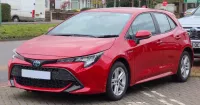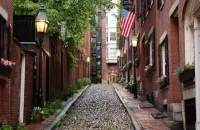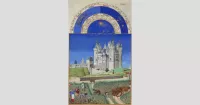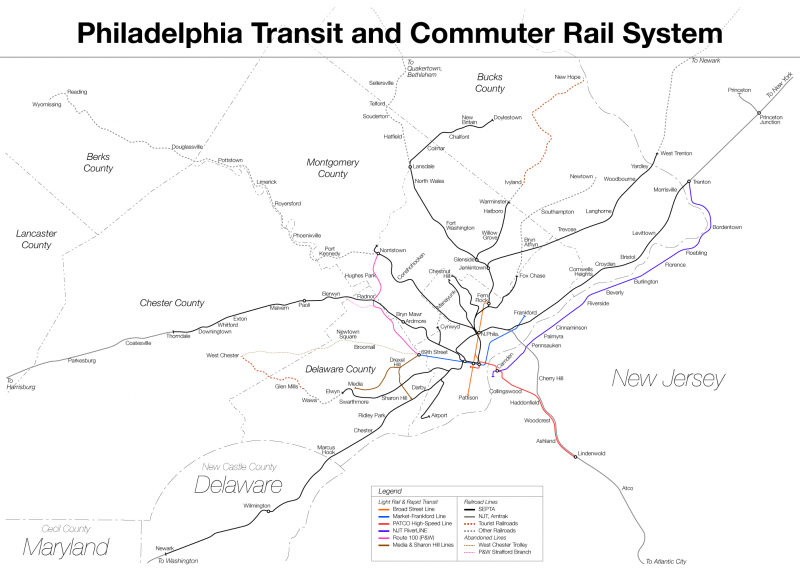SEPTA, the Southeastern Pennsylvania Transportation Authority, provides public transportation services—including bus, rail, and trolleybus—to nearly four million people across five counties in the Philadelphia area. Its operations encompass maintaining and upgrading its infrastructure, facilities, and vehicles, ensuring continued accessibility and efficiency for the region's commuters and residents.
1902: Philadelphia Rapid Transit Company formed
In 1902, the Philadelphia Rapid Transit Company was formed.
1913: Original proposal for the Roosevelt Boulevard Subway
In 1913, the original proposal for the Roosevelt Boulevard Subway was created, similar to New York City's Second Avenue Subway, but construction never commenced.
1940: Creation of the Philadelphia Transportation Company
In 1940, the Philadelphia Transportation Company (PTC) was created with the merger of the Philadelphia Rapid Transit Company and a group of smaller, independent transit companies.
August 17, 1963: SEPTA created by the Pennsylvania General Assembly
On August 17, 1963, SEPTA was created by the Pennsylvania General Assembly to coordinate government funding to various transit and railroad companies in southeastern Pennsylvania.
February 18, 1964: SEPTA Commenced operations
On February 18, 1964, SEPTA commenced operations.
November 1, 1965: SEPTA absorbed two predecessor agencies
On November 1, 1965, SEPTA absorbed two predecessor agencies.
1966: Reading Company and Pennsylvania Railroad lines operated under contract to SEPTA
By 1966, the Reading Company and Pennsylvania Railroad commuter railroad lines were operated under contract to SEPTA.
February 1, 1968: Pennsylvania Railroad merged with the New York Central railroad to become Penn Central
On February 1, 1968, the Pennsylvania Railroad merged with the New York Central railroad to become Penn Central.
September 30, 1968: SEPTA Acquired the Philadelphia Transportation Company
On September 30, 1968, SEPTA acquired the Philadelphia Transportation Company (PTC), which operated a citywide system of bus, trolley, and trackless trolley routes, the Market–Frankford Line, the Broad Street Line, and the Delaware River Bridge Line, becoming SEPTA's City Transit Division.
1968: SEPTA Board founding
At its founding in 1968, the SEPTA board had 11 members.
January 30, 1970: SEPTA Acquired the Philadelphia Suburban Transportation Company
On January 30, 1970, SEPTA acquired the Philadelphia Suburban Transportation Company, also known as the Red Arrow Lines, which included the Philadelphia and Western Railroad (P&W) route now called the Norristown High Speed Line, the Media–Sharon Hill Line (Routes 101 and 102), and several suburban bus routes in Delaware County.
June 21, 1970: Penn Central filed for bankruptcy
On June 21, 1970, Penn Central filed for bankruptcy.
March 1, 1976: SEPTA Acquired the transit operations of Schuylkill Valley Lines
On March 1, 1976, SEPTA acquired the transit operations of Schuylkill Valley Lines, known today as the Frontier Division.
March 1, 1976: SEPTA took over Schuylkill Valley Lines operations
SEPTA took over Schuylkill Valley Lines operations on March 1, 1976.
1976: Conrail took over Penn Central's assets
In 1976, Conrail took over the assets of Penn Central, along with those of several other bankrupt railroads, including the Reading Company.
1976: Silverliner IV cars order completion
Most of the cars used on the lines were built between 1976 and 2013. SEPTA completed the Silverliner IV order in 1976.
1978: AM General trackless trolleys built
Between 1978–79, AM General vehicles were built to operate five SEPTA trackless trolley routes.
1980: Prototype Kawasaki car delivered and tested
In 1980, a prototype Kawasaki car was delivered and tested before the production of the 112 vehicles for the SEPTA Subway-Surface trolley lines.
1981: Kawasaki begins building vehicles for SEPTA Subway-Surface trolley lines
In 1981, Kawasaki began building the 112 vehicles used on the SEPTA Subway–Surface trolley lines (Routes 10, 11, 13, 34, and 36). Known as "K-cars", they use the 5 ft 2+1⁄4 in (1,581 mm) Pennsylvania trolley gauge.
1982: Kawasaki cars built for Broad Street Line
Between 1982 and 1984, Kawasaki built cars for the Broad Street Line. These cars, known as B-IV, are stainless steel and include some cars with operating cabs at both ends.
January 1, 1983: SEPTA took over operations from Conrail
On January 1, 1983, SEPTA took over commuter rail operations from Conrail and acquired track, rolling stock, and other assets to form the Railroad Division.
January 1, 1983: SEPTA took over commuter rail services
On January 1, 1983, SEPTA took over the commuter rail services formerly operated by Conrail under contract and reorganized them as Regional Rail.
November 1983: Frontier Division took over Bucks County routes
In November 1983, SEPTA turned over the Bucks County routes (formerly Trenton-Philadelphia Coach Line Routes, a subsidiary of SEPTA) to the Frontier Division.
1984: Kawasaki cars built for Broad Street Line
Between 1982 and 1984, Kawasaki built cars for the Broad Street Line. These cars, known as B-IV, are stainless steel and include some cars with operating cabs at both ends.
1991: Expansion of the SEPTA board
In 1991 the state legislature added four additional members to the SEPTA board, giving themselves more influence.
1993: N-5 cars delivered by ABB
In 1993, the Norristown High Speed Line received a unique class of 26 cars known as N-5s. They were delivered by ABB after production difficulties.
1997: Adtranz builds M-4 cars for Market-Frankford Line
From 1997 to 1999, Adtranz built M-4 cars for the Market–Frankford Line. These cars represent the line's fourth generation of cars.
1999: Adtranz builds M-4 cars for Market-Frankford Line
From 1997 to 1999, Adtranz built M-4 cars for the Market–Frankford Line. These cars represent the line's fourth generation of cars.
2001: Delivery of diesel buses
SEPTA delivered diesel buses between 2001 and 2004, which were later replaced by NFI XDE40 hybrid buses delivered from 2017 to 2022.
June 2002: Trackless trolleys conversion to diesel buses
Until June 2002, routes 29, 59, 66, 75 and 79 used trackless trolleys, but were converted to diesel buses for an indefinite period starting in 2002 (routes 59, 66, 75) and 2003 (routes 29, 79).
2003: SEPTA purchases hybrid buses
In 2003, SEPTA purchased two small groups of hybrid buses, 5601H–5612H.
2003: Brookville rebuilds PCC cars
In 2003, the PCC cars on SEPTA Route 15 (Girard Avenue Line) were rebuilt by Brookville (and renamed PCC II) for the line's reopening. The rebuilt cars included air conditioning and a wheelchair lift.
2003: Trackless trolley service suspended
In 2003, trackless trolley service was suspended and the 110 AM General vehicles were removed from SEPTA's five routes.
2003: Trackless trolleys conversion to diesel buses
Until June 2002, routes 29, 59, 66, 75 and 79 used trackless trolleys, but were converted to diesel buses for an indefinite period starting in 2002 (routes 59, 66, 75) and 2003 (routes 29, 79).
2004: SEPTA purchases hybrid buses
In 2004, SEPTA purchased a group of hybrid buses, 5831H–5850H.
2004: Delivery of diesel buses
SEPTA delivered diesel buses between 2001 and 2004, which were later replaced by NFI XDE40 hybrid buses delivered from 2017 to 2022.
2005: New Flyer D40LF buses delivered
The New Flyer D40LF buses delivered in 2005 were replaced by the New Flyer XDE40 buses in 2021.
February 2006: SEPTA order for new trackless trolleys
In February 2006, SEPTA placed an order for 38 new low-floor trackless trolleys from New Flyer Industries.
October 2006: SEPTA board voted against ordering additional vehicles
In October 2006, the SEPTA board voted not to order additional vehicles for Routes 29 and 79, and those routes permanently became non-electric.
2006: SEPTA orders new low-floor trackless trolleys
In early 2006, SEPTA ordered 38 new low-floor trackless trolleys from New Flyer.
June 2007: Pilot trackless trolley arrived for testing
In June 2007, the pilot trackless trolley arrived for testing.
2007: SEPTA bus Route 306 began service
In 2007, SEPTA bus Route 306 began service, connecting the Great Valley Corporate Center and West Chester with the Brandywine Town Center.
April 14, 2008: Resumption of trackless trolley service on Routes 66 and 75
On April 14, 2008, trackless trolley service resumed on Routes 66 and 75, and on Route 59 the following day, but was initially limited to just one or two vehicles on each route.
August 2008: Vehicles were delivered
Between February and August 2008, The trackless trolley vehicles were delivered.
2008: SEPTA orders buses equipped with rooftop HVAC
In 2008, SEPTA's revenue from advertisements on the backs of its buses leads the authority to order mainly buses equipped with a rooftop HVAC, and with their rear route-number sign mounted on the roof, especially on 2008–2009 New Flyer DE40LFs and future orders.
2008: New Flyer trolleys enter service
In 2008, the 38 new low-floor trackless trolleys from New Flyer entered service, restoring trackless trolley service on routes 59, 66 and 75. These buses replaced SEPTA Neoplan EZs.
2008: Trackless trolley service resumed
In spring 2008, trackless trolley service resumed after a nearly five-year suspension.
2008: SEPTA purchases New Flyer buses
Prior to the 2008 purchase, SEPTA borrowed an MTA New York City Transit Orion VII hybrid bus # 6365 to evaluate it in service. SEPTA was the first to purchase New Flyer DE40LFs equipped with rooftop HVAC units.
2008: SEPTA orders New Flyer hybrid buses
SEPTA placed an order with delivery starting in 2008 for 400 New Flyer hybrid buses with options for up to 80 additional buses to replace the NABI Ikarus buses.
2008: New Flyer DE40LF buses delivered
The New Flyer DE40LF buses delivered between 2008-2009 were replaced by the New Flyer XDE40 buses in 2021.
February 2009: SEPTA bus Route 113 commences
In February 2009, SEPTA bus Route 113 commenced connecting bus service with DART at the Tri-State Mall, allowing service between Delaware County and Delaware, and connecting with DART First State's #13 and #61 bus at the Tri-State Mall.
2009: Criticism of sex identification markers on monthly passes
Between 2009 and 2013, SEPTA was criticized for its use of sex identification markers on the SEPTA-issued monthly transit passes.
2009: SEPTA utilizes American Recovery and Reinvestment Act funds
In 2009, SEPTA utilized $191 million of funds from the American Recovery and Reinvestment Act to make over 30 major improvements to the system, including renovations of the Spring Garden and Girard Avenue subway stations.
2009: SEPTA orders buses equipped with rooftop HVAC
In 2009, SEPTA's revenue from advertisements on the backs of its buses leads the authority to order mainly buses equipped with a rooftop HVAC, and with their rear route-number sign mounted on the roof, especially on 2008–2009 New Flyer DE40LFs and future orders.
2009: SEPTA labor strike
SEPTA has had more labor strikes than any other transit agency in the U.S., occurring in 1977, 1981, 1983, 1986, 1995, 1998, 2005, 2009, 2014, and 2016.
2009: SEPTA sued over lack of accessibility
SEPTA was successfully sued in 2009 over its lack of accessibility for trolley vehicles.
2009: New Flyer DE40LF buses delivered
The New Flyer DE40LF buses delivered between 2008-2009 were replaced by the New Flyer XDE40 buses in 2021.
October 29, 2010: Silverliner V cars introduced into service
After building delays, the first Silverliner V cars were introduced into service on October 29, 2010.
2010: SEPTA builds LEED station
In 2010, SEPTA built the first Leadership in Energy and Environmental Design (LEED) station at Fox Chase terminal.
2010: Service between West Chester and Brandywine Town Center discontinued
In 2010, SEPTA bus Route 306 service between West Chester and Brandywine Town Center was discontinued due to low ridership.
July 2012: SEPTA voted best large transit agency
In July 2012, SEPTA was voted the best large transit agency in North America by the American Public Transportation Association (APTA).
March 19, 2013: Silverliner V cars in service
As of March 19, 2013, all Silverliner V cars were in service and made up almost one-third of the current 400 car Regional Rail fleet.
June 2013: Sex identification markers on monthly passes stopped
In June 2013, SEPTA stopped including sex identification markers on the SEPTA-issued monthly transit passes after criticisms about discrimination.
2014: Ridership Decreased by 13%
From 2014 to 2019 Ridership had decreased 13% due to many factors.
July 2016: Structural flaw discovered in Silverliner V cars
In July 2016, a serious structural flaw was discovered in more than 95% of the 120 Silverliner V cars in the SEPTA regional rail fleet, which would reduce the system's capacity by as much as 50%.
July 25, 2016: Transportation issues expected for the Democratic National Convention
In July 2016, the loss of system capacity was also expected to cause transportation issues for the Democratic National Convention being held in Philadelphia on the week of July 25, 2016.
2016: SEPTA launches battery electric bus pilot program
In 2016, SEPTA launched a pilot program to replace diesel buses with battery electric buses on routes 29 and 79, using a $2.6-million Federal Transit Administration grant. The agency ordered 25 buses from Proterra, Inc.
December 2017: SEPTA completed an Environmental Impact Statement to extend the Norristown High Speed Line to the King of Prussia area
As of December 2017, SEPTA had completed an Environmental Impact Statement to extend the Norristown High Speed Line to the King of Prussia area; however, the project was later discontinued mid-way through.
2017: Emergency welding on Market-Frankford Line cars
In 2017, 90 cars on the Market–Frankford Line had emergency welding to fix cracking steel beams.
2017: Electric buses expected to enter service
In 2017, SEPTA's battery electric buses from Proterra, Inc. were expected to enter service, returning electric propulsion to routes 29 and 79 after nearly 15 years of diesel operation.
2017: SEPTA delivers NFI XDE40 hybrid buses
SEPTA delivered 525 NFI XDE40 hybrid buses from 2017 to 2022 to replace all the diesel buses that were delivered between 2001 and 2004.
2018: SEPTA's ranking among U.S. transit systems
As of 2018, SEPTA was the sixth-largest U.S. rapid transit system by ridership and the fifth-largest overall transit system in the nation, with about 302 million annual unlinked trips. The system controlled 290 active stations, over 450 miles of track, 2,350 revenue vehicles, and 196 routes.
2019: Ridership Decreased by 13%
From 2014 to 2019 Ridership had decreased 13% due to many factors.
March 2020: COVID-19 Pandemic
The 24% decrease in ridership from 2019 to March 2020 was mostly attributable to the impact of government-implemented lock-downs in response to the COVID-19 pandemic that began in mid-March 2020.
October 2020: SEPTA trials use of lean benches
In October 2020, SEPTA trialed the use of lean benches instead of traditional seating at some of its stations, which was criticized as hostile architecture.
2020: Permanent welding on Market-Frankford Line cars
In 2020, all the Market-Frankford Line cars, including the ones temporarily repaired in 2017, had to have more permanent welding to fix cracking steel beams.
2020: Electric buses sidelined due to defects
In February 2020, SEPTA's Proterra battery electric buses were sidelined due to a defect in the buses' plastic chassis that led to a cracking problem.
2020: SEPTA rebuilds PCC cars again
Since 2020, SEPTA is once again rebuilding the PCC cars used on Route 15 (Girard Avenue Line).
September 2021: Accessibility of New York City Subway stations
As of September 2021, 28% of the New York City Subway stations are ADA-compliant, which is the lowest in the nation.
September 2021: Lean bench trials concluded
In September 2021, SEPTA concluded its trials of lean benches and removed them from stations.
September 2021: SEPTA proposed rebranding their rail transit services as the "SEPTA Metro"
In September 2021, SEPTA proposed rebranding their rail transit services, including the Market–Frankford Line, Broad Street Line, Subway–Surface trolley lines, Norristown High Speed Line, Route 15 trolley, and the Media–Sharon Hill Line, as the "SEPTA Metro" to make the system easier to navigate.
2021: SEPTA orders New Flyer XDE40 buses
In 2021, SEPTA placed an order for 220 New Flyer XDE40 buses with an option for 120 additional buses. These buses replaced the New Flyer D40LF buses that were delivered in 2005 and have also replaced the New Flyer DE40LF buses that were delivered between 2008-2009.
February 2022: Accessibility of subway and commuter rail stations
As of February 2022, about 46% of SEPTA's subway and commuter rail stations combined are ADA-compliant.
2022: SEPTA delivers NFI XDE40 hybrid buses
SEPTA delivered 525 NFI XDE40 hybrid buses from 2017 to 2022 to replace all the diesel buses that were delivered between 2001 and 2004.
March 2023: SEPTA Board Members
In March 2023 the members of the SEPTA Board were recorded.
June 2023: SEPTA budgeted $40 million for the SEPTA Metro rebranding
In June 2023, SEPTA budgeted $40 million for the rebranding of SEPTA Metro.
2023: Regional Rail ridership
In 2023, daily ridership on the SEPTA regional rail network averaged 58,713, with the Lansdale/Doylestown, Paoli/Thorndale, and Trenton lines each receiving over 7,000 riders per day.
2023: Transfer point at the Tri-State Mall moved
In 2023, the transfer point at the Tri-State Mall was moved to the Claymont Transportation Center.
2023: SEPTA is the only U.S. transit authority that operates all five major types of terrestrial transit vehicles
In 2023, trolleybuses in Greater Boston were discontinued, leaving SEPTA as the sole remaining U.S. transit authority operating all five terrestrial transit vehicle types: regional commuter rail trains, rapid transit subway and elevated trains, light rail trolleys, trolleybuses, and motorbuses.
2023: PCC cars scheduled to return
The PCC cars being rebuilt by SEPTA are scheduled to return in 2023, and they will feature plastic seating.
June 2024: Ridership of regional rail and transit
As of June 2024, SEPTA's regional rail ridership was at 66% and transit at 75%, combining for a systemwide recovery rate of 74% of pre-COVID ridership. For transit separated by mode, bus routes had the highest recovery rate of 84%; trackless trolleys were lowest at 62%; light rail and heavy rail were at 63% and 66%, respectively.
2024: Leslie Richards resigned
In 2024, SEPTA general manager Leslie Richards resigned.
2024: Planned rollout of SEPTA Metro
In 2024, SEPTA planned to roll out the SEPTA Metro.
2025: SEPTA service cuts
In 2025, SEPTA announced unprecedented cuts to its services, reducing service on all bus and rail lines by 20% and eliminating 32 bus routes and shortening a further 16 routes. It would also increase transit fares to $2.90 per ride.
2025: SEPTA took over bus route 204
In 2025, SEPTA took over operation of bus route 204 between Paoli Regional Rail Station and Eagleview.
2025: Geographically-accurate map of SEPTA and connecting rail transit services
In 2025, a geographically-accurate map of SEPTA and connecting rail transit services was created, including Regional Rail, rapid transit, interurban, and trolley lines.
2027: New Alstom streetcars scheduled to enter service
Currently, SEPTA is ordering new 130 low floor streetcars that will be built and delivered by Alstom. These trolley cars are scheduled to enter service between 2027-2030.
2030: New Alstom streetcars scheduled to enter service
Currently, SEPTA is ordering new 130 low floor streetcars that will be built and delivered by Alstom. These trolley cars are scheduled to enter service between 2027-2030.
Mentioned in this timeline
Pennsylvania is a U S state located in the Mid-Atlantic...

A car also known as an automobile is a wheeled...

Philadelphia or Philly is Pennsylvania's most populous city and the...

St Louis is an independent city located in Missouri near...

Boston the capital and most populous city of Massachusetts is...

September is the ninth month of the year in the...
Trending

8 months ago Bears Prepare for 2025 NFL Draft: Mock Drafts and Player Projections Emerge
18 days ago Christian Gonzalez shines for Patriots, recovers from concussion, ready for Week 10.
8 months ago Trump and Paramount to Mediate $20B '60 Minutes' Lawsuit; Mediator Agreed Upon.

6 days ago Dolly Parton Addresses Health Issues, Misses Award Ceremony and Dollywood Hall of Fame Induction.
30 minutes ago Druski, Tom Brady, and Gopuff Unite to Advocate for Super Bowl Monday Off

4 months ago Travis Scott Surpasses Eminem as Second Most Streamed Rapper on Spotify
Popular
Aftyn Alyssa Behn is an American politician currently serving as...

William Franklin Graham III commonly known as Franklin Graham is...

XXXTentacion born Jahseh Dwayne Ricardo Onfroy was a controversial yet...

Candace Owens is an American conservative political commentator and author...

Marjorie Taylor Greene known as MTG is a U S...

Maxine Waters is an American politician who has served as...
